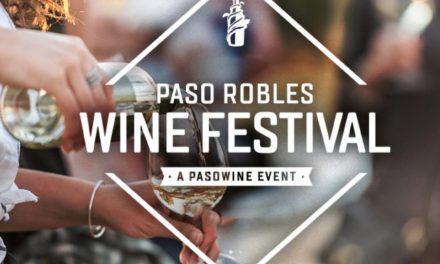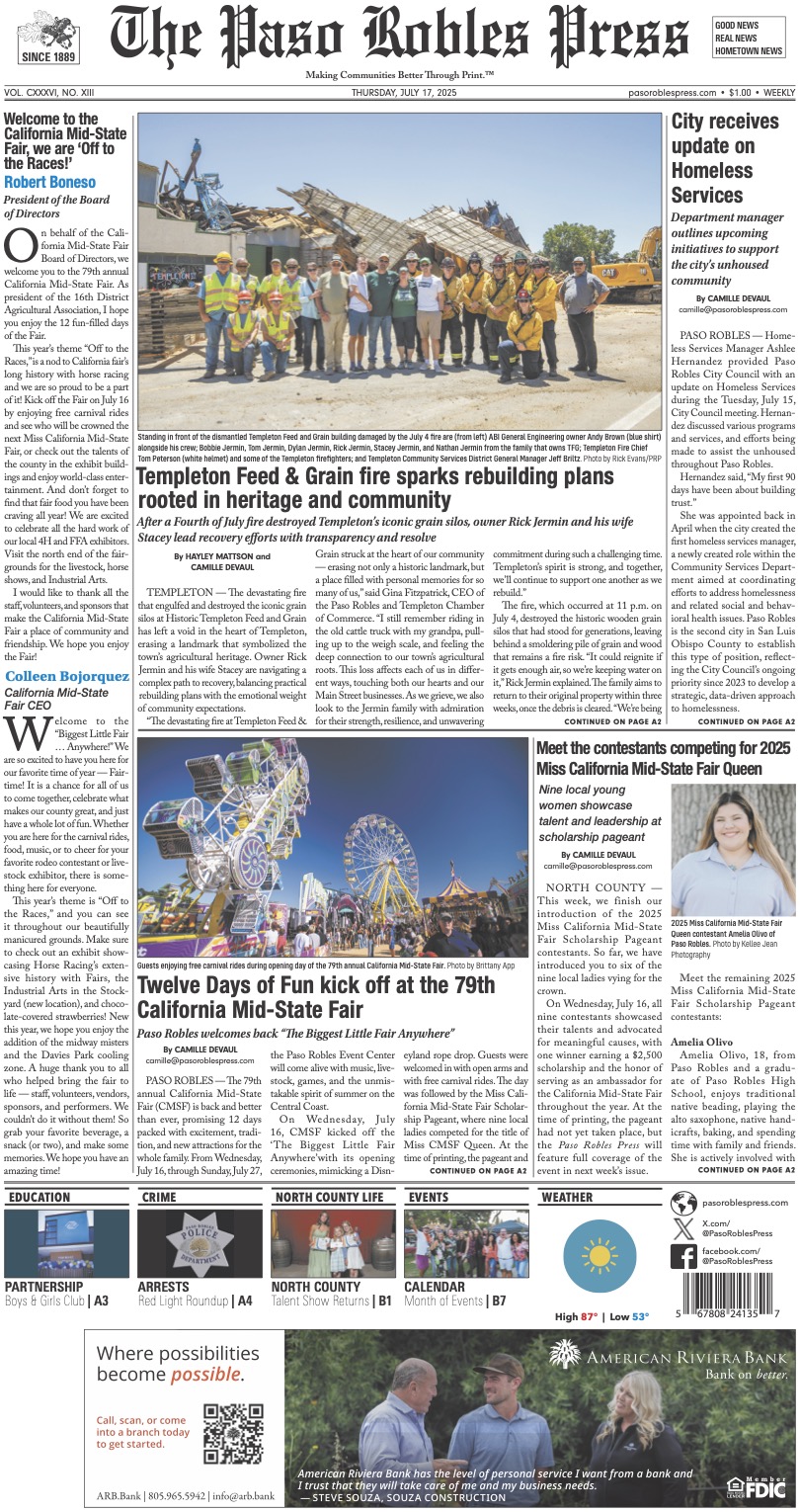
We’re almost at the tail end of summer and some of us will soon be reaching for red wines to replace the refreshing whites. But do we really want to give up the whites altogether?

Enter chardonnay. The wine makes a perfect transition from summer into fall drinking. The varietal is gradually stepping away from “all butter, all oak” profile toward a crisp, un-oaked, steely profile. However, there are takers for both style.
Here on the Central Coast, there is a wide range of chardonnays to be savored, from the rich mouthfeel style of Paso to the crisp minerality of the cooler regions of Edna Valley and Monterey County.

Although Paso is not know for chardonnay due to its warm climate, there are several wineries making impressive wines from local fruit, among them Eberle, Daou, Justin, Adelaida Jack Creek, Castoro Cellars, Robert Hall and Calcareous to name a few.
Then there are wineries such as Brochelle, Monochrome, Field Recordings, Tooth & Nail and Clavo producing chardonnays sourced from cooler areas of Santa Barbara County, Edna Valley and Monterey County, Others such as Niner Estates, Derby Wine Estate and J. Lohr produce chardonnay (and pinot noir) from estate vineyards in Edna Valley, San Simeon or Monterey County.

To experience a range of chardonnays I gathered a group of local winemakers at our home where we tasted over a dozen styles from Central Coast.
Among the winemakers in the group was Rachel Martin, a fairly new name on the Central Coast, who recently launched her Oceano chardonnay. Martin resides In New York City, sources fruit from Spanish Springs vineyard in SLO County AVA’s Pismo Beach and her wine is produced in Napa Valley by winemaker Marbue Marke.
Martin is an industry veteran who hails from a winemaking family in Middleburg, VA. In fact, she created and co-authored the region’s AVA. Her enology and viticulture studies have taken her from Napa Valley College to the University of Bordeaux. Martin co-founded and operated Boxwood Winery in Middleburg as its executive vice president.

A chance visit brought Martin to Pismo Beach and Spanish Springs vineyard and so to our tasting. It was the vineyard’s one-mile proximity to the Pacific that compelled her to leave her 15-year tenure at Boxwood to make wine in California and focus solely on Oceano.
Martin’s passion for the vineyard comes through clearly in the wine. Aptly named, the 2017 Oceano was a burst of ‘sea breeze in a glass.’ Lilting notes of guava and green melon dance with a seductive raciness and a razor sharp minerality. The medium to full-bodied wine was vinified with no malolactic fermentation.
“It’s more vineyard driven in the classic Bourgogne style,” commented Marbue, who joined us at the tasting.
Winemaker Amy Butler, who is known for crafting Rhône style wines under her Ranchero Cellars label, launched her Dorothy Jean chardonnay last year. “I love chardonnay,” she said of the wine she makes in collaboration with vintner Janis Pelletiere.

“I’ve been making this wine in my head for years,” said Butler. The fruit is sourced from Sierra Madre vineyard in Santa Barbara County’s Santa Maria Valley and the wine is 100 percent barrel fermented in 20 percent new French oak with 60-70 percent malolactic fermentation. The 2017 vintage was a blast of deliciousness, although bone dry, citrusy notes played on flavors of toasty crust, reminiscent of a lime tart.
Dave McGee, owner/winemaker of Monochrome in Tin City, specializes in white wines only. While he’s known for brilliant white blends, McGee crafts varietal chardonnay and albariño. He sources fruit from various California appellations, from cooler to warmer regions, and the wines are all barrel fermented, But — this is the key — they are vinified differently, divided between new oak or neutral, cool and warm fermentations, native yeast or cultured yeast and so on. The winemaker then takes these differently vinified components and creates a layered blend.
“We intentionally try to spread the range of flavors. It gives us different components to play with,” said McGee, who is, you might suspect, a former engineer. He calls his style deconstructing and reconstructing.

Monochrome’s 2016 Blasphemy is a 100 percent chardonnay, multi-layered with a round mouthfeel and cheerful minerality. The 2017 Altered Images was a blend of chardonnay and chenin blanc which adds aromatics and a bump of acidity, noted McGee. Both wines are made with fruit sourced from Sta. Rita Hills.
Others in our lineup were J. Lohr’s chardonnays from its Arroyo Seco vineyards in Monterey County. The 2017 Arroyo Vista chardonnay was rich with creme brûlée notes while the 2017 October Night was redolent with floral aromas. Adelaida’s 2018 HMR chardonnay, fermented with indigenous yeast, continuing through a natural 100 percent malolactic fermentation had a well rounded mouthfeel with hints of stone fruit.
Stolo Vineyards in Cambria and Derby’s Derbyshire vineyard in San Simeon produce crisp chardonnays from the cool coastal region of SLO County. Stolo’s 2016 Estate Reserve showed a balance of creamy texture and bright acidity with hints of white flowers; the 2017 Estate was redolent with fresh lime zest and vanilla. Derby’s 2017 chardonnay unleashed notes of pineapple and quince.
Niner Wine Estates’ chardonnays come from its 77-acre Jesperson Ranch, located just four miles from the ocean in Edna Valley. “My goal is to reflect the site even though it’s malo and barrel fermented, ” commented winemaker Molly Bohlman of the 2016 chardonnay that reflected a balanced tension of creaminess and freshness. The wine danced with green apple and pear notes and a mouth-watering salinity. “The salinity comes in daily from the ocean” Bohlman noted.
The 2016 Reserve chardonnay (available at Niner tasting room only) was perfection in elegance and purity, with a delicious mouthfeel without the opulence. “These wines develop slowly,” Bohlman commented on its three- to five-year aging potential.
There’s much to explore in chardonnay selections available along Central Coast, so whether your palate begs for the crisp, minerally style or a rich buttery one, go ahead and uncork your favorite chardonnay this fall.











